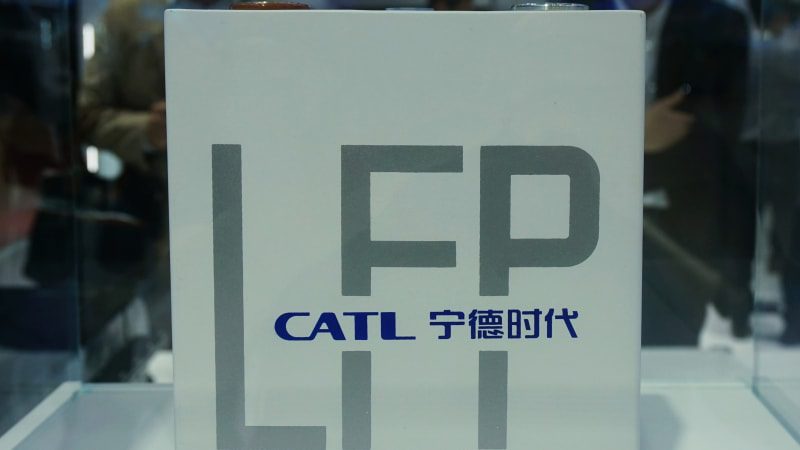GM reportedly in talks with CATL to license LFP battery tech

Here’s a story with a lot of layers, and it starts in China. The Beijing Late Post reports (translated, and via Car News China) that battery maker Contemporary Amperex Technology Company (CATL) is in talks with General Motors about establishing a North American battery production facility that would duplicate the licensing agreement Ford arranged with CATL for Ford’s Blue Oval Battery Park in Michigan (BOPP). The BOPP, announced a year ago, would have Ford pay for the factory and production equipment, then license CATL’s lithium iron phosphate battery technology. CATL would set up the plant and train Ford personnel, and help Ford set up a supply chain that satisfies IRA tax credit requirements, but have no financial interest in the plant, making its money from the licensing fee and royalties for the batteries produced. The Late Post cited unnamed sources for the GM news, saying that this potential plant is being considered for the U.S. or Mexico, and would be capable of making just as many batteries as Ford’s facility.
We know the next coming of the Chevrolet Bolt will employ LFP batteries; GM CEO Mary Barra said late last year, “This is will be our first deployment in North America of LFP technology in the Ultium platform,” GM CFO Paul Jacobsen reaffirming the plan last month. The automaker says using the less expensive LFP cells as opposed to the nickel cobalt manganese (NCM) chemistry will save billions. Neither exec identified a source for the batteries. GM’s primary Ultium partner, LG Energy, talked last year about developing LFP cells and establishing production in the U.S. We’re not clear where the tech conglomerate is in the process, but we get the impression LG isn’t far enough along to challenge the capabilities of CATL LFP batteries.
CATL already supplies automakers like BMW, Kia, Mercedes-Benz and Tesla. Last year, the company announced a Shenxing Superfast Charging Battery that can withstand a charging rate that adds 248 miles in 10 minutes. This year, the battery maker and Chinese bus maker Yutong just announced a long-life EV battery that CATL will warranty for 15 years or 932,000 miles, and CATL said it would lower LFP’s cost-per-kilowatt-hour by 50% by the middle of this year.
If GM does make a deal, it would mark a quick about-face. Last summer, a few months after the Ford-CATL announcement, a Wall Street Journal article said Mary Barra told a small Congressional delegation that Ford’s actions would help the Chinese solidify their EV dominance. The paper characterized Barra’s sentiment as, “Ford’s plans could be the harbinger of Chinese domination of U.S. car manufacturing.” The reversal — if it happens — would make the best business sense; with GM promising lower-cost EVs and every U.S. company needing to please Wall Street four times a year with better returns, why wait for the local competition to get more of a head start?
The leap to LFPs would also emphasize the difficulty of challenge of the U.S. corporate R&D investment structure and its demands with long-term R&D spending mechanisms in other countries. Engineers at MIT were among the first groups to create transport-industry-worthy LFP calls, battery-maker A123 systems emerging in 2001, then going on to gets hundreds of millions in funding from aerospace, automakers, the U.S. Department of Energy, and supplying Fisker the packs for the original Karma. The EV revolution didn’t catch on here in time to save A123. Meanwhile, by the time of A123’s 2012 bankruptcy, China had spent 11 years on what the government had deemed a “priority research project” in its five-year plan: EVs. A recent NYT report says the Chinese EV market continues to survive and thrive only through government assistance. MIT’s Technology Review has a great writeup on how and why China chose battery-powered cars, which is delicious closure, an MIT magazine writing about how an MIT discovery that traveled across the world now returns bringing fears it will threaten U.S. potential.
That aside out of the way, let’s say it one more time: This is an unsubstantiated report. We know GM’s going to get LFPs, we don’t know from where.
And where is Ford in this? The automaker reduced the scope of its $3.5 billion Michigan plant due to the EV segment slowdown and regulatory changes. The Detroit Free Press reported that capacity’s been cut by 43% to 20 gWh per year of production, but that Ford will ramp up again when the market demands.



